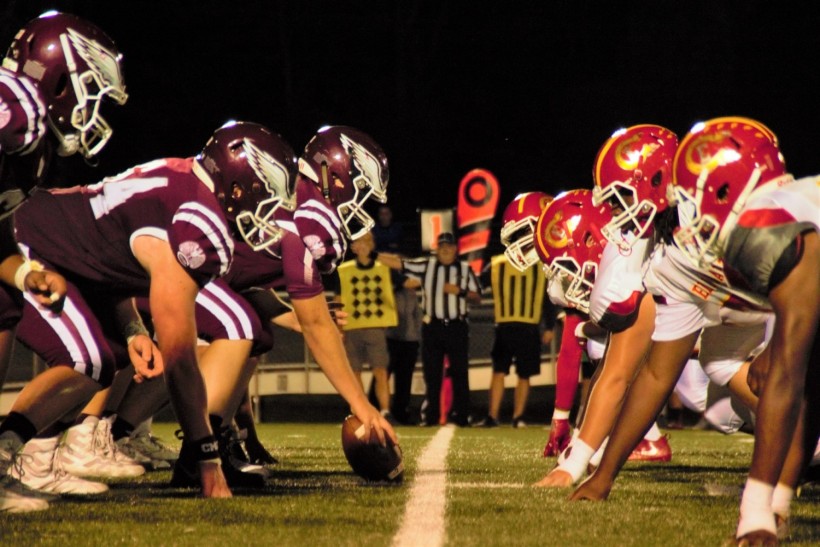
(Photo : Muyuan Ma on Unsplash)
The time of year is coming around again when fantasy football aficionados start asking themselves, "who should I draft?" Even if you're new to fantasy football, it's time to start gearing up. The NFL preseason is about to gear up, and in just a few weeks, the Buffalo Bills and the Los Angeles Rams will meet to kick off the 2022 season. With that comes to start of a new fantasy season.
This is the prime time for fantasy football since it is draft season.
You might be full of hope and optimism, but a bad draft can quickly destroy all of that. By preparing for the big day, you're positioning yourself to be more successful, create and build a competitive team, and identify value and busts.
Below is a guide to what you need to know to prepare and ultimately dominate your 2022 draft.
Types of Drafts
Some of the general types of draft styles you'll see in fantasy football include:
-
An automated draft, where a player doesn't control their pick. Instead, every pick is automated, and the best player is taken as determined beforehand by a database.
-
A linear draft isn't frequently used in fantasy, but it's most similar to the actual NFL draft. There's a set order followed in every draft round. If you pick first in the first round, then you do the same in every other round.
-
The snake or serpentine draft is most often used in fantasy football. This mirrors the first two rounds and then goes on from there. If you're in a ten-person draft, for example, the person who picks first also picks 20th and then 21st. The person who picks fifth picks 16th and 25th. The players who are picking at the end of odd rounds have a chance to stay competitive to get top players on even rounds. It's a fair draft approach, which is why it's so popular in fantasy.
-
In an auction draft, every team gets a starting amount of "money." Then, teams offer money with players going to the highest bidder.
-
In a value-based draft, a fantasy player picks the player who's best relative to different factors of value.
What to Expect During the Draft
If you're new to fantasy sports, the draft is perhaps the most critical part of everything else you'll do throughout the season.
You might have plans to get together with your friends, you can do it virtually, or some leagues will even make it a destination event, traveling somewhere like Las Vegas for their draft.
Figuring out a time that's going to work for everyone gets tough, but the general guide is that you try to have your draft as close to the start of the regular season as you can. Typically, the third weekend of the preseason is optimal because that's the final week when all the starters are going to play.
You want to be as up-to-date as you can before drafting, which is why scheduling matters so much.
You can see new players actually be in action, you can determine how position battles are going to shake out, and you'll be armed with as much information as you can be.
If you're doing an online draft, those start at a certain time and date, and they're usually determined shortly after the creation of a league. In an online draft, each participant submits an updated list of player rankings, or they need to be signed into their league's hosting website during this time so they can make their own picks. An automatic timer counts down, and every participant has anywhere from one to two minutes to make a decision. If they don't choose within the allotted time, then they pick a player that's pre-determined through their list of player rankings, which is personalized.
A live draft, as mentioned, takes place whenever everyone agrees to meet. The commissioner of your league will manually enter the draft results before the start of the regular NFL season. If someone doesn't show up as a fantasy owner, then they should submit their player rankings before the draft or stay in contact by phone or online during the live draft.
If you're doing an in-person draft, you need a draft board, or you'll have to use software to track everyone's selections. You can buy a draft board or make one. Everyone should bring their list of player rankings and something to write with. Once players get selected, you can then mark them out so you'll be able to track that they aren't available anymore.
If you're in charge of hosting a fantasy football draft party, you'll probably want to get a draft kit. Fantasy draft kits include the draft board and player labels. When you have a draft board, you can choose players, get their stickers, and put the sticker under the team name on the draft board. You'll probably need printouts with a blank roster list, and of course, you want snacks and drinks because it's a fun event, although it can be a nail-biter.
The Importance of Mock Drafts
Leading up to your 2022 draft, you should complete some mock drafts. A mock draft gives you the chance to practice before your actual draft. You can figure out more about when players will be taken, and you can try out various strategies.
During your research, you might want to use various cheat sheets as well. Cheat sheets will calculate optimal player rankings for a league based on league settings. They'll keep you updated on player projections, injuries, news, and team depth charts.
League Formats
Before you can do the right research and analysis to prepare for your draft, it's important you know the rules of your league inside and out. There are different football fantasy league types, and these include:
-
PPR stands for points per reception. This is the most popular variation of standardized fantasy scoring. Points per reception mean that for every catch, a receiver gets one point. A receiver in a play doesn't have to be a wide receiver or tight end. Running backs, fullbacks, and even quarterbacks can be receivers in a play. An offensive lineman catch won't count for fantasy because those players can't be drafted. This puts a lot of emphasis on the passing game, so wide receivers and tight ends are more valuable.
-
Standard scoring allows starters on a fantasy team to earn points for their team based on the actions performed weekly in real games, such as receiving yards, touchdowns, and field goals. Every action that a fantasy player completes has a particular point value.
-
A draft league means that it's non-continuous, and you have to draft players at the start of each season. Every member of the league is put into a draft order. Then they choose their players through the process of the draft. Once the draft ends, every team is set, and it can only change in a few certain ways, including cutting a player and picking up someone from the waiver wire.
-
Half-point PPR is a scoring system where a player gets a half fantasy point per reception. The idea here is that it balances out reception scoring because it lowers overall points.
-
Individual defensive player scoring or IDP scoring can be used in addition to a standard or PPR league. This allows for a more complex experience for fantasy players.
Basic Draft Strategy
You need a strong draft strategy to be successful in your 2022 fantasy league and going forward.
Even if you're not well-versed in all-things football, you can still get a solid draft strategy that will help you perform well.
Again, to start developing a strategy, cheat sheets are important. They're lists of players with their most recent performances, stats, and upcoming injuries, and they'll list upcoming opponents where they could have an advantage. A cheat sheet will usually have an average draft position or ADP as well. ADP tells where a player is being drafted in other leagues, so you're not drafting a player too early on that you don't have to.
The player rankings are somewhat like ADP. These rankings are a list of the draft pool players and how the league ranks them. They're created by experts.
A few best practices for your draft strategy include:
-
In fantasy football, running backs are your most important players. You want to back up your best running back.
-
Your first-round pick sets the tone for everything else. You might have someone who you think is going to be a breakout, but still, don't pick him in your first round. It's better to use this pivotal round for someone reliable.
-
Don't overvalue rookies. Wait until you are further down in your rounds to choose rookies, even if you have a gut feeling.
-
Don't pick players from your favorite team just because it's your favorite team.
Finally, while the rule of thumb for a lot of fantasy players is to take a running back in the first round, you could also go with a different strategy.
* This is a contributed article and this content does not necessarily represent the views of hngn.com








